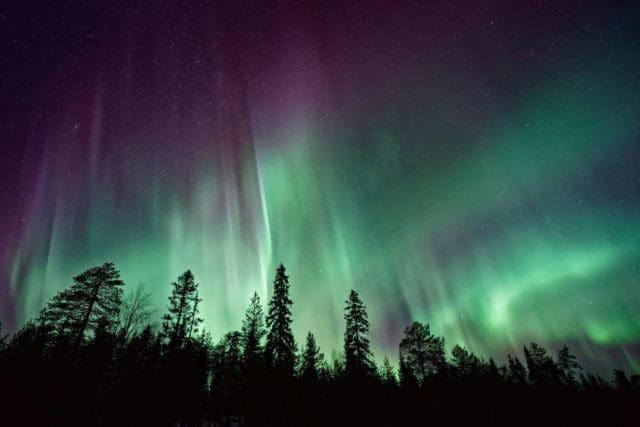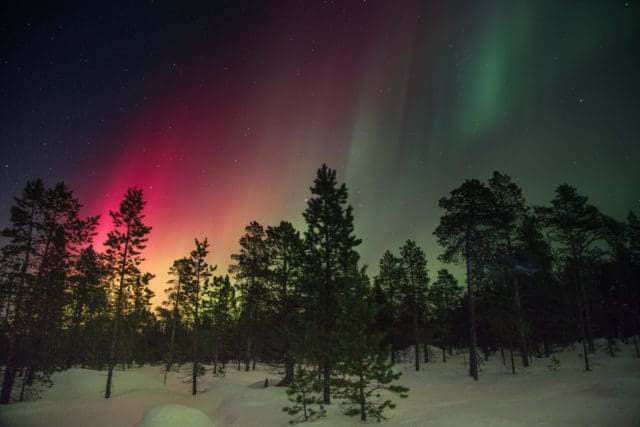On September 1st and 2nd of 1859 two British astronomers recorded what they called a “white light flare” while observing the sun. Richard C. Carrington and Richard Hodgson observed a flare in the solar photosphere of the sun.
On 1 September 1859, Carrington and Richard Hodgson, another English amateur astronomer, independently made the first observations of a solar flare. Because of a simultaneous “crochet” observed in the Kew Observatory magnetometer record by Balfour Stewart and a geomagnetic storm observed the following day, Carrington suspected a solar-terrestrial connection. Worldwide reports on the effects of the geomagnetic storm of 1859 were compiled and published by Elias Loomis which support the observations of Carrington and Balfour Stewart. For this reason, the geomagnetic storm of 1859 is often called the Carrington event.
The event was recorded and the effects were seen and felt around the globe. It was even reported locally in Utah in several newspapers. Dr. Tony Phillips production editor of Science@NASA talks about the event. “In the days that followed his observation, a series of powerful CMEs hit Earth head-on with a potency not felt before or since. Intense geomagnetic storms ignited Northern Lights as far south as Cuba and caused global telegraph lines to spark, setting fire to some telegraph offices and thus disabling the Victorian Internet.”

I can only imagine what people in Utah thought when they experienced the effects of the Carrington Event. Word had not been compiled or sent yet from the sighting in Britain before the effects would of been seen and felt in Utah. There were some local newspapers that reported on the incident.
W.W. Phelps (Sup. Met. Obs. – Meteorological Office Sept 6, 1859) wrote an report that was printed in The Desert News on Sept, 7th, 1859 that Northern Lights or an Aurora Borealis was seen. “On Sunday evening, the 28th utl., a beautiful display of aurora borealis, or norther lights was observed in this city.” The article goes on to describe what the event looked like. “a palish light wavered up about 30 degress towards the zenith, giving the “Great Bear” or “Dipper” quite a silver hue; thence it began to srepad east and west with increasing grandeur, til about 11, when the perpendicular waves, streams, or rays of light, moving consecutively from the North Star east and west, beautified a large portion of the northern hemisphere. A few masses of floating, fleecy (sonder) clouds were gorgeously decorated with a splendor not easily described.” He noted that the event happened again on evening of the 1st and 2nd. “The aurora borealis, a little after midnight, ahd spread from north to south, from east to west, in grand divisions of pale light, mellow yellow, light crimson, and sable green.” He continues to say that on the evening of the third at about 8 a faint light “sprung up in the east, and continued to rise til the summit was about 45 degrees high, and resembled faint norther lights.”
The Desert News in their Sept 11th, 1859 issue ran this article that discusses the effect that it had on the technology of the day, which was the telegraph. “This morning, one of the most startling as well as singular electrical phenomena occurred on the telegraph lines throughout the United States, that has ever taken place in this country. It has been manifested on the various telegraph lines through the country during all this forenoon, thereby causing much annoyance to the operators. A series of currents of electricity, entirely independent of the batteries, seem to have taken possession of the wires, and to such an extent that the National Telegraph line was actually enabled to send messages from New York to Pittsburgh, PA, correctly without the us of a particle of galvanic battery, using this independent electricity of air in the place of that supplied by the ordinary batteries!”

The Desert News article continues, “This is a phenomena, we are assured, which has never taken place, even among the many pranks an unseen power is daily practicing on the telegraph wires. As has been stated and mentioned by us on Monday last, this extra ordinary freak is doubtless owing to the Aurora Borealis, as the wires were paralyzed during their shining on Sunday night. As these same lights were shining brilliantly after one o’clock this morning, it is fair to presume that the phenomena of today may be attributed to the same cause.”
What would this do to our electrical systems today. Dr. Phillips from NASA continues, “A similar storm today could have a catastrophic effect. According to a study by the National Academy of Sciences, the total economic impact could exceed $2 trillion or 20 times greater than the costs of a Hurricane Katrina. Multi-ton transformers damaged by such a storm might take years to repair.” You can read more about future impacts another solar storm could cause in the article, “Severe Space Weather – Social and Economic Impacts” on the science.nasa.gov website.
Mike Kieffer – Editor-in-Chief, Cedar Valley Sentinel
Mike Kieffer is a dynamic leader and community advocate based in Eagle Mountain, Utah. He serves as the Editor-in-Chief of the Cedar Valley Sentinel, a local publication dedicated to informing, inspiring, and elevating the Cedar Valley community through honest and accurate journalism. With a passion for fostering connections, Kieffer has made it his mission to highlight local businesses, provide reliable news, and support community development.
Beyond his editorial role, Kieffer is the owner of Lake Mountain Media, LLC, a company specializing in media and communications, and the co-owner of Quail Run Farms, which focuses on sustainable farming and community engagement. He also actively contributes to the local economy and culture as a member of the Eagle Mountain Chamber of Commerce.
Kieffer’s dedication extends to preserving and promoting the history and heritage of the Cedar Valley area. He often participates in community-centered events and media, including podcasts that explore the unique aspects of life in the region. Through his varied endeavors, he remains a steadfast advocate for the growth and enrichment of the local community.

